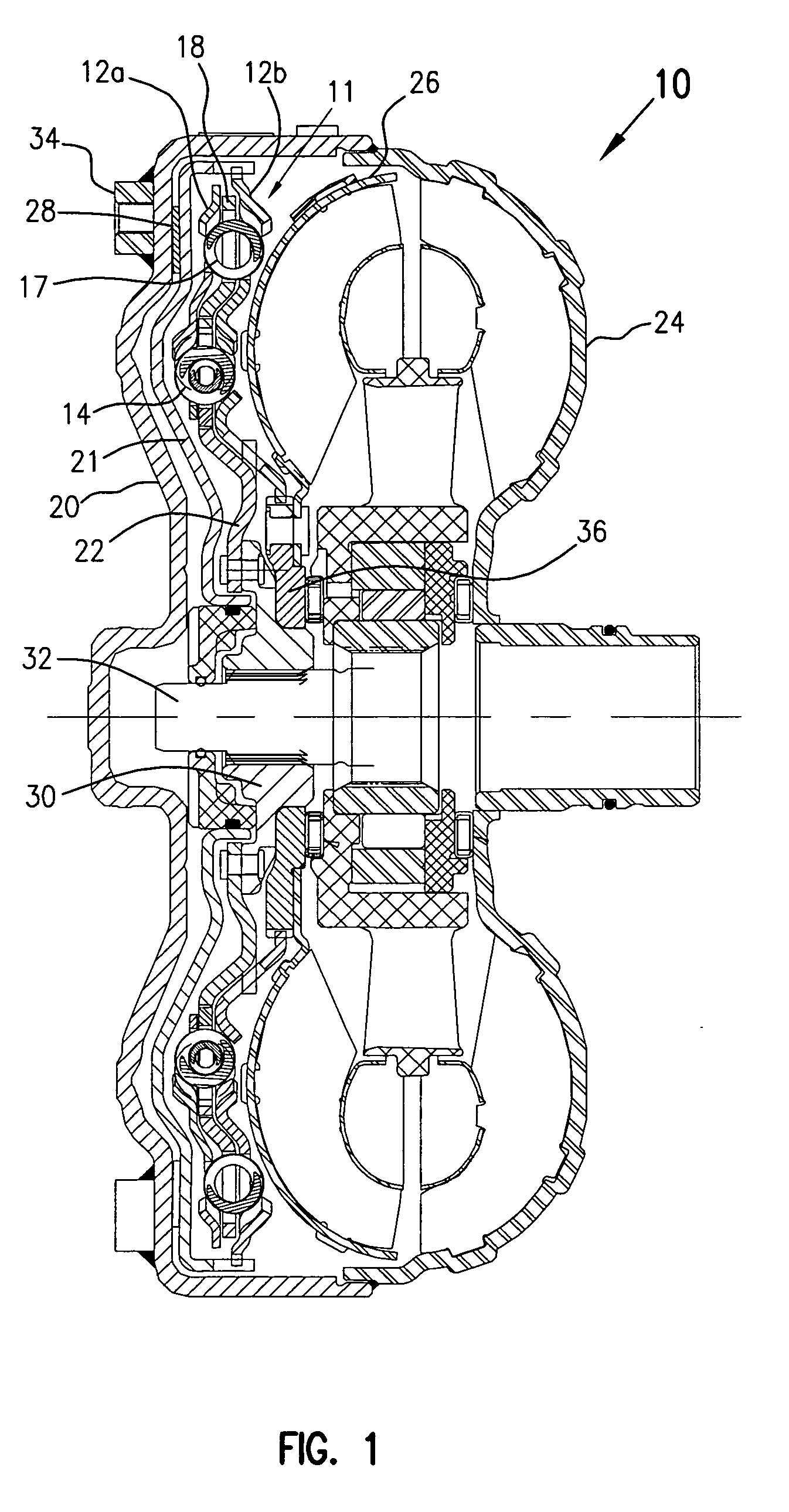Series-parallel multistage torque converter damper
a torque converter and damper technology, applied in the direction of fluid gearings, couplings, belts/chains/gearings, etc., can solve the problems of not meeting the torque capacity or nvh requirements of current turbine dampers, engine vibration isolation is more difficult, and the need for torque capacity and nvh is serious
- Summary
- Abstract
- Description
- Claims
- Application Information
AI Technical Summary
Benefits of technology
Problems solved by technology
Method used
Image
Examples
Embodiment Construction
[0037] In discussing the present invention the following definitions are used:
[0038]“Wind-up angle” is the relative angle between the cover plate of the damper and the output flange starting at zero degrees from a “free” position.
[0039]“Free position” is the position where all springs have minimum applied compressive force.
[0040]“Damper capacity” is the torque absorbing ability, commonly measured in Newton-meters, which absorbed torque is held as potential energy until released.
[0041]“Rate” of wind-up is the amount of absorbed torque per wind-up degree.
[0042]“Hysteresis” is energy loss, mostly due to friction, during wind-up and return to a free position.
[0043]“Envelope space” is the space required in the system to hold the damper.
[0044]“Damper Input” is intended to mean energy input into the damper, either in a direction from the turbine / engine or in a direction from the transmission. For convenience in description, the input is described as coming from the turbine toward th...
PUM
 Login to View More
Login to View More Abstract
Description
Claims
Application Information
 Login to View More
Login to View More - R&D
- Intellectual Property
- Life Sciences
- Materials
- Tech Scout
- Unparalleled Data Quality
- Higher Quality Content
- 60% Fewer Hallucinations
Browse by: Latest US Patents, China's latest patents, Technical Efficacy Thesaurus, Application Domain, Technology Topic, Popular Technical Reports.
© 2025 PatSnap. All rights reserved.Legal|Privacy policy|Modern Slavery Act Transparency Statement|Sitemap|About US| Contact US: help@patsnap.com



